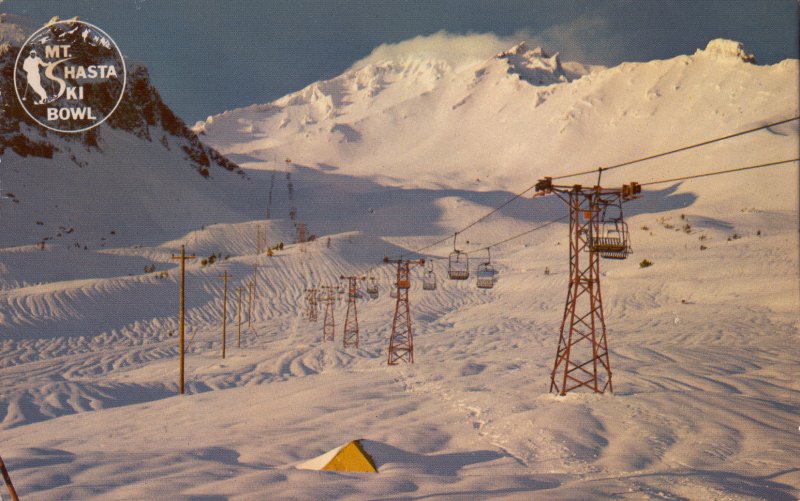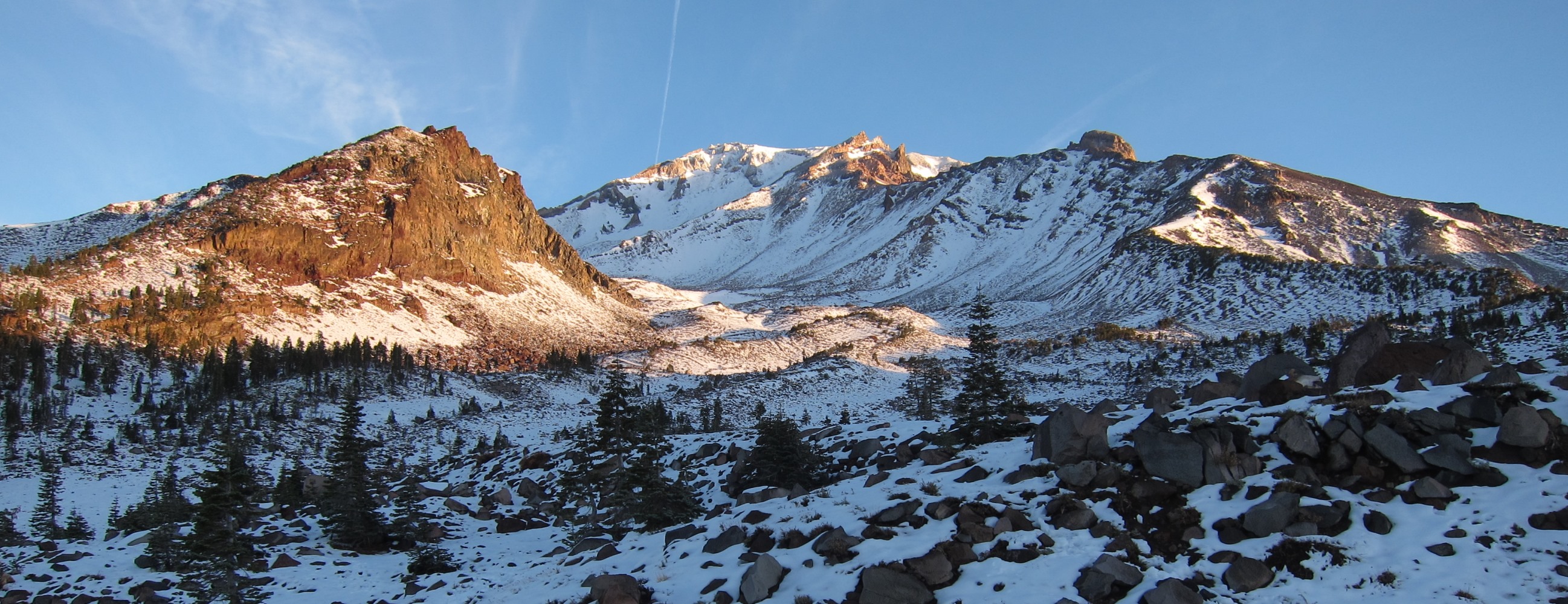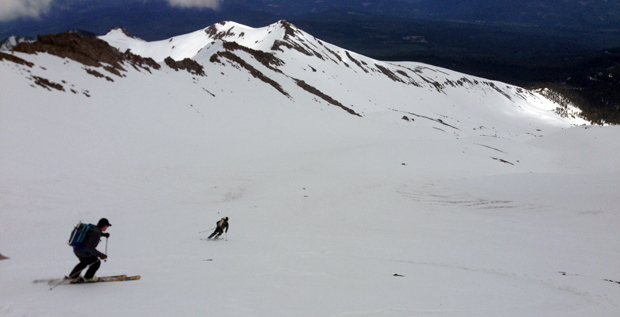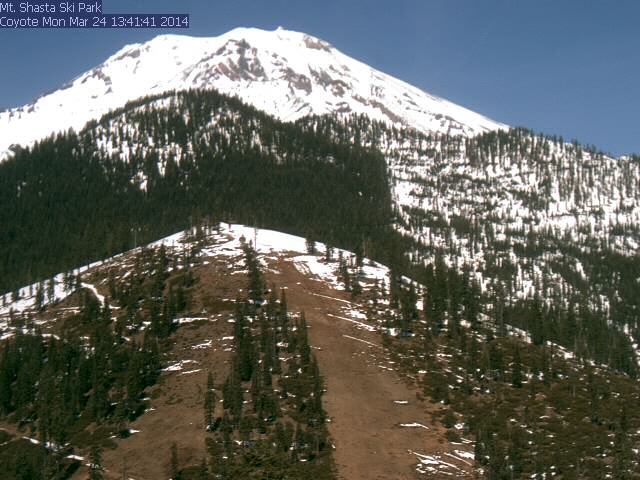begin quote from:
UFOs and Avalanches | History of Skiing on Mount Shasta
SnowBrains | | Featured Article
Featured Article
Mount Shasta, California. Important to Native American beliefs and rumored home to the Lemurians. Also, one of the snowiest places on the West Coast. Shasta holds the record, unbroken since 1959, of the most snow in a single storm with just under 16 feet! Mount Shasta has long been a tempting location for skiers. Dominating the southern end of the Cascade Range Shasta reaches a height of 14,179′, making it the second-tallest peak in the Cascades.
The area around Shasta has been inhabited for over 5,000 years. Shasta holds a prominent role in Klamath mythology, who believe that Shasta is inhabited by the Spirit of the Above-World, Skell. Beyond the Klamath, Shasta has attracted people of many faiths and beliefs over time, including Catholics, Buddhists, believers that Shasta is a hidden city from the lost continent of Lemuria, and Skiers, the tribe we identify with. Indeed, Shasta is often associated with various energies, is the site of frequent UFO spottings, and encounters with the fabled Lemurians (can’t miss them, they’re 9 feet tall). Add that to record storm totals, and there is indeed something special about Mount Shasta.

The history of chairlift accessed skiing on Mount Shasta began in 1959 when Mount Shasta Ski Bowl was opened to the public. Located on the Southern flank of Mount Shasta and backing up against Sargent’s Ridge and Green Butte, the elevation of the base area was 7,850 feet and the chair topped out at 9,200 feet. Mount Shasta Ski Bowl had one chairlift when it was opened, Green Butte, that accessed nearly 1400 vertical feet and a base lodge.

The same area today. Old Mt. Shasta Ski Bowl in the fall, Green Butte is on the left and Sargents Ridge is on the right. photo: summitpost.org
The ski area was constantly in the red, the only profitable season was 1962-1963 when the ski area recorded over 40,000 visitors. In 1971 a fire destroyed the original base lodge and a new one was constructed by Thanksgiving, allowing the area to continue operations that season under the name Ski Shasta. In 1973 a second chairlift was added on the East side of Ski Shasta. The area stumbled along until January 1978, when an avalanche destroyed the Green Butte chair. This was the final nail in the coffin, with their main chairlift destroyed Ski Shasta closed the doors.

From 1978 to 1985 there was no lift-accessed skiing on Mount Shasta. In 1985 Mt. Shasta Ski Park was opened; Mt. Shasta Ski Park learned from the lessons of Mt. Shasta Ski Bowl and built their ski area with a base at 5,500 feet and topping out at 6,890 feet. While Mt. Shasta Ski Park may not receive quite as much snow as the prior area, by locating their chairlifts below treeline they minimized the risk of avalanche destruction.
While Mt. Shasta Ski Park is still operating to this day, this season has presented challenges. The region has been plagued by the Ridiculously Resilient Ridge (responsible in part for the ongoing California Drought). Mt. Shasta Ski Park has yet to open for the 2013-2014 season, and their snowpack depth is 14 inches. Additionally, the low elevation of the ski area has presented issues in the past. While Mt. Shasta receives snowfall storm totals measured in feet, this precipitation often falls as rain at lower elevations.

How the Shasta Ski Park will fare into the future is anyone’s guess. However, skiing on Shasta is not going away anytime soon. During the winter months, backcountry skiers can ski Shasta’s storms off Sargent’s Ridge, a quick tour up from Bunny Flat. Come spring months ski mountaineering and volcano touring open up countless options on all aspects of Mt. Shasta. While Mount Rainier may boast 10,000 vertical feet of sustained skiing, the top 4,500 feet are glacier travel. Shasta offers 8,000 feet of crevasse-free skiing in the spring. Get the timing right and you can harvest an epic corn cycle!
No comments:
Post a Comment